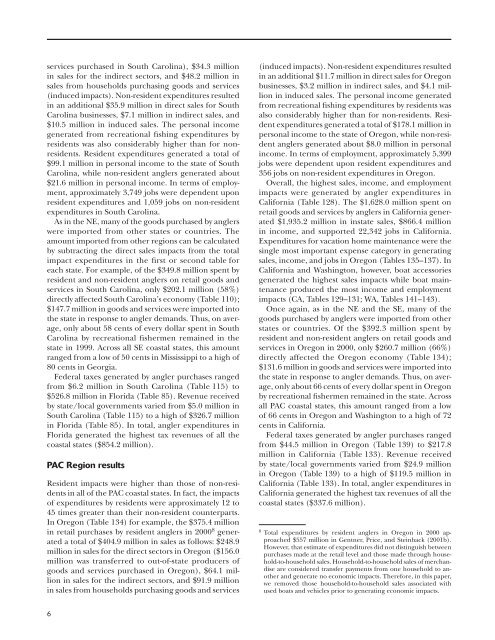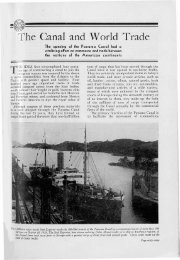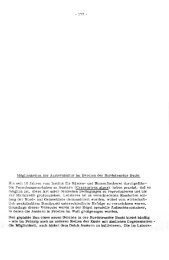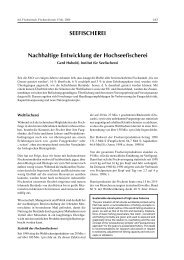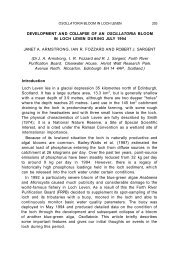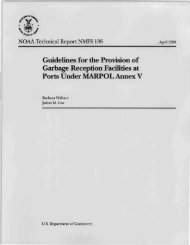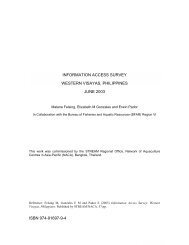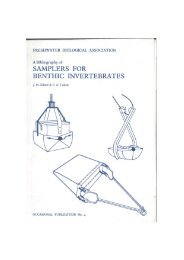The Economic Importance Of Marine Angler Expenditures In
The Economic Importance Of Marine Angler Expenditures In
The Economic Importance Of Marine Angler Expenditures In
Create successful ePaper yourself
Turn your PDF publications into a flip-book with our unique Google optimized e-Paper software.
services purchased in South Carolina), $34.3 million<br />
in sales for the indirect sectors, and $48.2 million in<br />
sales from households purchasing goods and services<br />
(induced impacts). Non-resident expenditures resulted<br />
in an additional $35.9 million in direct sales for South<br />
Carolina businesses, $7.1 million in indirect sales, and<br />
$10.5 million in induced sales. <strong>The</strong> personal income<br />
generated from recreational fishing expenditures by<br />
residents was also considerably higher than for nonresidents.<br />
Resident expenditures generated a total of<br />
$99.1 million in personal income to the state of South<br />
Carolina, while non-resident anglers generated about<br />
$21.6 million in personal income. <strong>In</strong> terms of employment,<br />
approximately 3,749 jobs were dependent upon<br />
resident expenditures and 1,059 jobs on non-resident<br />
expenditures in South Carolina.<br />
As in the NE, many of the goods purchased by anglers<br />
were imported from other states or countries. <strong>The</strong><br />
amount imported from other regions can be calculated<br />
by subtracting the direct sales impacts from the total<br />
impact expenditures in the first or second table for<br />
each state. For example, of the $349.8 million spent by<br />
resident and non-resident anglers on retail goods and<br />
services in South Carolina, only $202.1 million (58%)<br />
directly affected South Carolina’s economy (Table 110);<br />
$147.7 million in goods and services were imported into<br />
the state in response to angler demands. Thus, on average,<br />
only about 58 cents of every dollar spent in South<br />
Carolina by recreational fishermen remained in the<br />
state in 1999. Across all SE coastal states, this amount<br />
ranged from a low of 50 cents in Mississippi to a high of<br />
80 cents in Georgia.<br />
Federal taxes generated by angler purchases ranged<br />
from $6.2 million in South Carolina (Table 115) to<br />
$526.8 million in Florida (Table 85). Revenue received<br />
by state/local governments varied from $5.0 million in<br />
South Carolina (Table 115) to a high of $326.7 million<br />
in Florida (Table 85). <strong>In</strong> total, angler expenditures in<br />
Florida generated the highest tax revenues of all the<br />
coastal states ($854.2 million).<br />
PAC Region results<br />
Resident impacts were higher than those of non-residents<br />
in all of the PAC coastal states. <strong>In</strong> fact, the impacts<br />
of expenditures by residents were approximately 12 to<br />
45 times greater than their non-resident counterparts.<br />
<strong>In</strong> Oregon (Table 134) for example, the $375.4 million<br />
in retail purchases by resident anglers in 2000 8 generated<br />
a total of $404.9 million in sales as follows: $248.9<br />
million in sales for the direct sectors in Oregon ($156.0<br />
million was transferred to out-of-state producers of<br />
goods and services purchased in Oregon), $64.1 million<br />
in sales for the indirect sectors, and $91.9 million<br />
in sales from households purchasing goods and services<br />
6<br />
(induced impacts). Non-resident expenditures resulted<br />
in an additional $11.7 million in direct sales for Oregon<br />
businesses, $3.2 million in indirect sales, and $4.1 million<br />
in induced sales. <strong>The</strong> personal income generated<br />
from recreational fishing expenditures by residents was<br />
also considerably higher than for non-residents. Resident<br />
expenditures generated a total of $178.1 million in<br />
personal income to the state of Oregon, while non-resident<br />
anglers generated about $8.0 million in personal<br />
income. <strong>In</strong> terms of employment, approximately 5,399<br />
jobs were dependent upon resident expenditures and<br />
356 jobs on non-resident expenditures in Oregon.<br />
Overall, the highest sales, income, and employment<br />
impacts were generated by angler expenditures in<br />
California (Table 128). <strong>The</strong> $1,628.0 million spent on<br />
retail goods and services by anglers in California generated<br />
$1,935.2 million in instate sales, $866.4 million<br />
in income, and supported 22,342 jobs in California.<br />
<strong>Expenditures</strong> for vacation home maintenance were the<br />
single most important expense category in generating<br />
sales, income, and jobs in Oregon (Tables 135–137). <strong>In</strong><br />
California and Washington, however, boat accessories<br />
generated the highest sales impacts while boat maintenance<br />
produced the most income and employment<br />
impacts (CA, Tables 129–131; WA, Tables 141–143).<br />
Once again, as in the NE and the SE, many of the<br />
goods purchased by anglers were imported from other<br />
states or countries. <strong>Of</strong> the $392.3 million spent by<br />
resident and non-resident anglers on retail goods and<br />
services in Oregon in 2000, only $260.7 million (66%)<br />
directly affected the Oregon economy (Table 134);<br />
$131.6 million in goods and services were imported into<br />
the state in response to angler demands. Thus, on average,<br />
only about 66 cents of every dollar spent in Oregon<br />
by recreational fishermen remained in the state. Across<br />
all PAC coastal states, this amount ranged from a low<br />
of 66 cents in Oregon and Washington to a high of 72<br />
cents in California.<br />
Federal taxes generated by angler purchases ranged<br />
from $44.5 million in Oregon (Table 139) to $217.8<br />
million in California (Table 133). Revenue received<br />
by state/local governments varied from $24.9 million<br />
in Oregon (Table 139) to a high of $119.5 million in<br />
California (Table 133). <strong>In</strong> total, angler expenditures in<br />
California generated the highest tax revenues of all the<br />
coastal states ($337.6 million).<br />
8 Total expenditures by resident anglers in Oregon in 2000 approached<br />
$557 million in Gentner, Price, and Steinback (2001b).<br />
However, that estimate of expenditures did not distinguish between<br />
purchases made at the retail level and those made through household-to-household<br />
sales. Household-to-household sales of merchandise<br />
are considered transfer payments from one household to another<br />
and generate no economic impacts. <strong>The</strong>refore, in this paper,<br />
we removed those household-to-household sales associated with<br />
used boats and vehicles prior to generating economic impacts.


